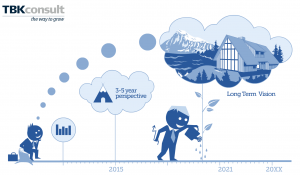Consumption Economics, The Cloud and the Software Reseller Channel
The impact of the transformation on the software industry from the up-front, pre-paid, on-premise, perpetual license-based business models to the software-as-a-service business models has been discussed for some time now. The questions that still require solid answers are:
- Will the transformation really take place across the software industry or will it be isolated to the SOHO and SMB markets or to areas with simple applications only?
- Will the transformation have an impact on the profit margins?
- Where will the independent channel partners fit into the picture?
- Will the software vendors bypass the channel partners and serve the markets directly?
- How long will the transformation take?
- How much time do we have to migrate from the perpetual license model to the software-as-a-service model?
- Are there other effects of the transformation apart from the change in the cash flow that we must consider?
I have often been involved in these discussions and my own conclusions have always been that this transformation will turn the software industry upside down, but, for several reasons, will take some time.

As part of the research for my Amazon bestselling book “Building Successful Partner Channels” I came across the book “Consumption Economics” by Wood, J. B., Hewlin, T., & Lah, T. E. (Consumption economics : the new rules of tech. California: Point B Inc. 2011). Although the book is not a literary masterpiece (is far too long, with far too many repetitions and with illustrations that are confusing rather than illustrative and unreadable in the Kindle version) it is still worthwhile reading for its’ thorough analysis of the impact of the “________ as a service” format on an industry that has been dominated by the capital investment format. The software industry that had been blessed by the “pay first – consume later” principle is now transforming into a “pay as you consume” format and the “Consumption Economics” book is worth reading if you are affected by these changes.
The transformation is driven by numerous interests and factors such as fast and inexpensive access to the Internet; the customers’ appreciation of the “pay as we consume” format; the end-users’ option of circumnavigating the CIO and his IT department for new applications; the opportunity of insurgents to disrupt established markets (salesforce.com, Netsuite, Workday, Basecamp, Atlassian, Zendesk, Dropbox, Billys, Skype etc.); the reduction in complexity for the user and the enormous economy of scale benefits of using large data centers. With so many drivers and benefits the challenges associated with integration, customization, privacy, security, availability, survivability and performance will be solved enabling the “________ as a service” format to also successfully enter the enterprise markets. Wood, Hewlin & Lah predict that the transformation will take place in most segments of the market within the next 5-10 years leaving only very small pockets resistant to the consumption format.
The Cloud and the Channel
While the “Consumption Economics” book is very thorough in analyzing the challenges and opportunities for the software and technology vendors it doesn’t say much about the challenges for independent channel partners. I have devoted a chapter in my new book to discussing exactly this issue because I believe that independent channel partners may continue to play a crucial role in the software industry, serving customers with vertical and horizontal extensions to the core software and providing numerous auxiliary services ensuring that the software actually delivers the value expected.
So, what happens to the independent channel partners as the competitive “________ as a service” format becomes available to their customers?
The independent channel partners can rest assured that their vendors are not going to bypass them and take their customers. No software company in the world with platform products has the capacity to serve all the verticals, provide all the horizontal extensions and deliver all the services that are required for market leadership. Instead the competition will come from new insurgents specializing in vertical or horizontal market segments. Therefore the independent channel partners cannot rely only on the support from the brand of their principals as it is unlikely that these brands will have values that are competitive vis-à-vis the specialized insurgents. Channel partners must take a step up the value chain and start building their own brands as extensions to the brands of their principals. Focus and/or volume will be new issues on the agenda of channel partners.
Software margins for the independent channel partners will disappear, not because the software vendors are evil and greedy, but because the competitive pressure in general will squeeze industry margins and because the “pay as we consume” formats completely change the cash flow available to share. Channel partners will have to take a step up in the value chain and specialize, offer more services, more extensions and/or go for volume. Successful channel partners will understand that the platforms provided by their principals are mainly an alternative for developing the whole stack yourself and a comforting parameter for customers is knowing that the product is backed by a platform with a high probability for survival and a rich marketplace for additional functionality and alternative service providers.
Get your copy of my Amazon bestseller: Building Successful Partner Channels










